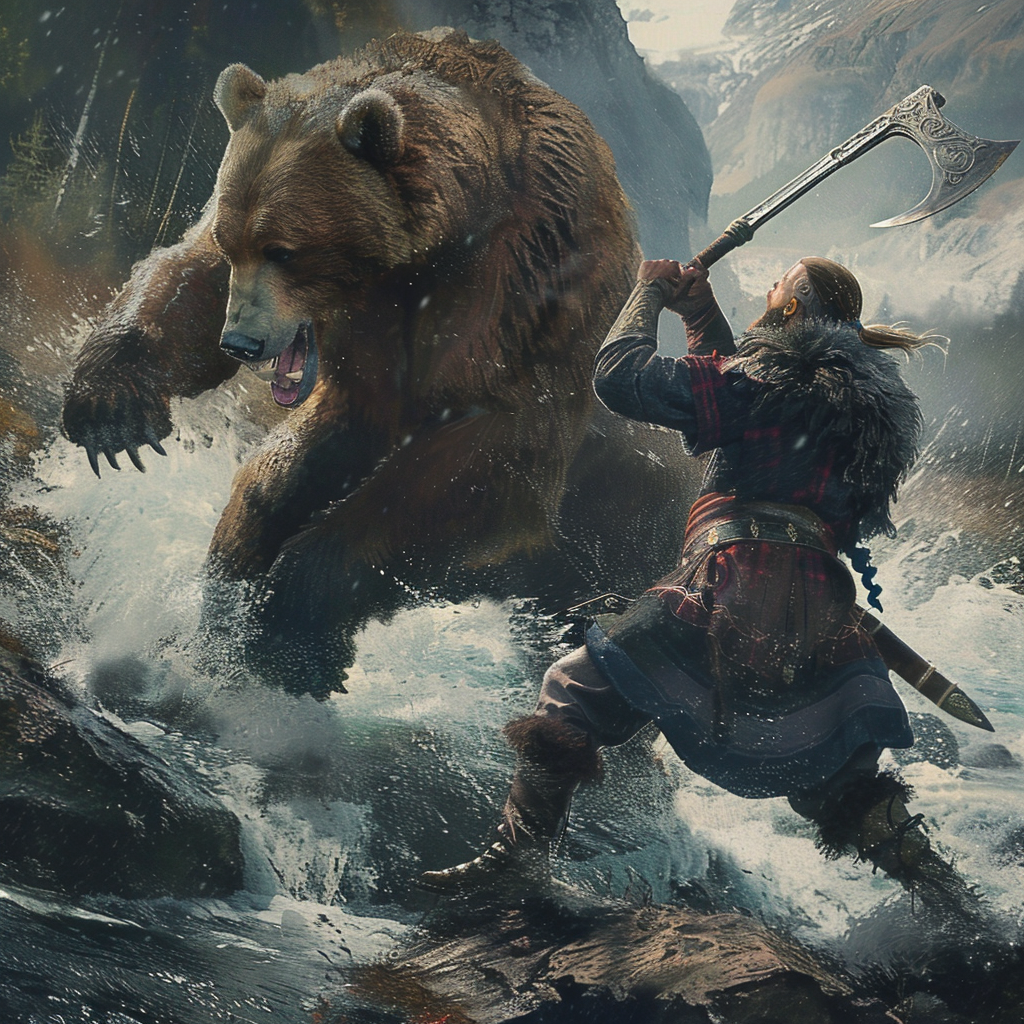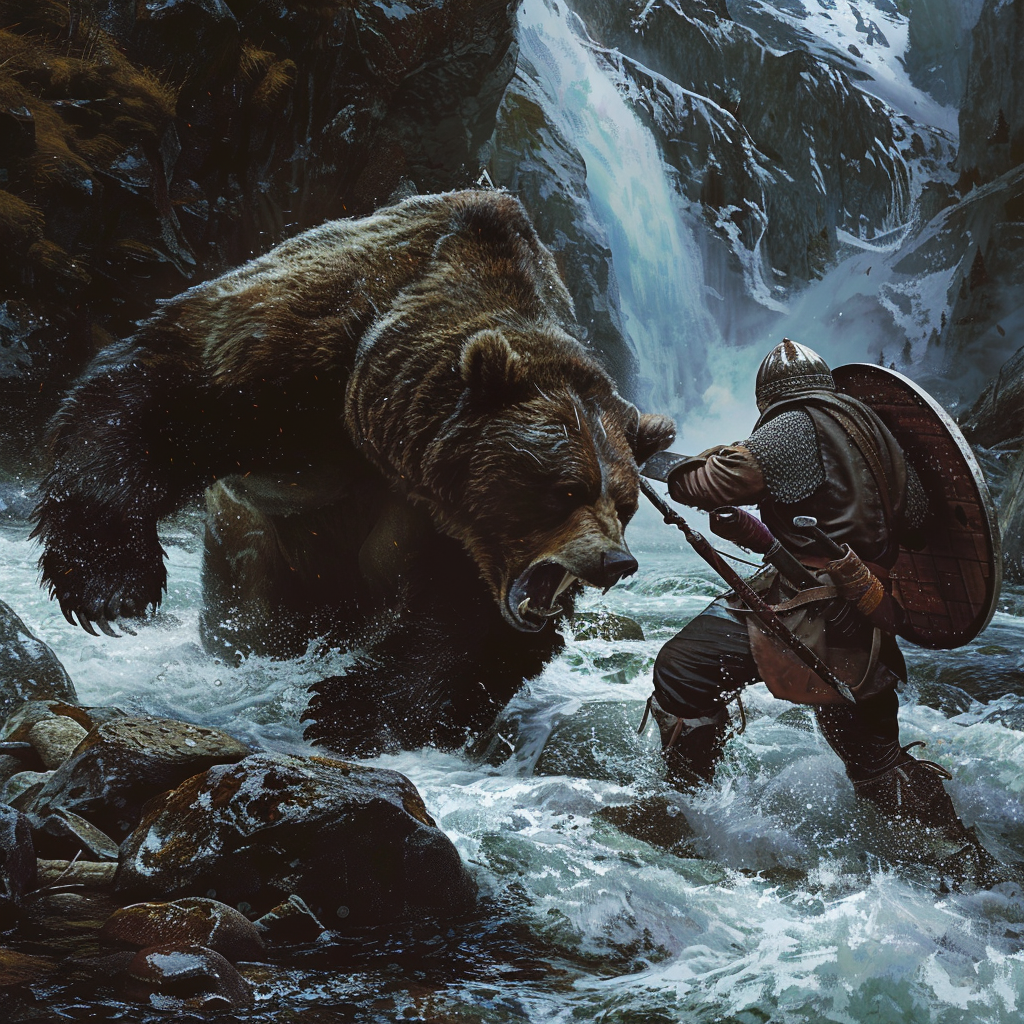Bears hold significance in Norse mythology, often symbolizing strength, courage, and protection. While they may not be as prominently featured as some other animals like wolves or ravens, bears appear in various contexts within Norse lore.
Berserkers: In Norse society, there were warriors known as berserkers who were renowned for their fierce fighting prowess and seemingly supernatural abilities in battle. These warriors were sometimes associated with bears, both in terms of their ferocity and their attire. Berserkers were said to fight with the strength and fearlessness of bears, often wearing bear skins or invoking bear spirits for protection and power.
Ursine Beings: There are references to bear-like beings in Norse mythology, such as the jotunn (giants) or other supernatural creatures. These beings were often depicted as powerful and formidable, embodying the strength and primal nature associated with bears.
Artifacts and Symbolism: Bears are also depicted in Norse art and artifacts, such as carvings on runestones or decorations on weapons and jewelry. These depictions may symbolize various attributes like strength, courage, or protection, reflecting the cultural significance of bears in Norse society.
Bjarkan Rune: In runic alphabets, each rune often had symbolic meanings. The Bjarkan rune, shaped like the letter ‘B,’ is associated with the birch tree and, by extension, bears. This rune is linked to concepts of renewal, protection, and the feminine aspects of nature.
Ursula and the Bear: In some versions of Norse mythology, a story features a princess named Ursula who is transformed into a she-bear. This transformation is part of various tales that involve magical changes and challenges to be overcome by heroes.
While bears don’t have the same level of mythology as creatures like dragons, wolves, or ravens in Norse myths, their presence in certain contexts reflects the Norse people’s connection to the natural world and their incorporation of animal symbolism into their stories and beliefs.



